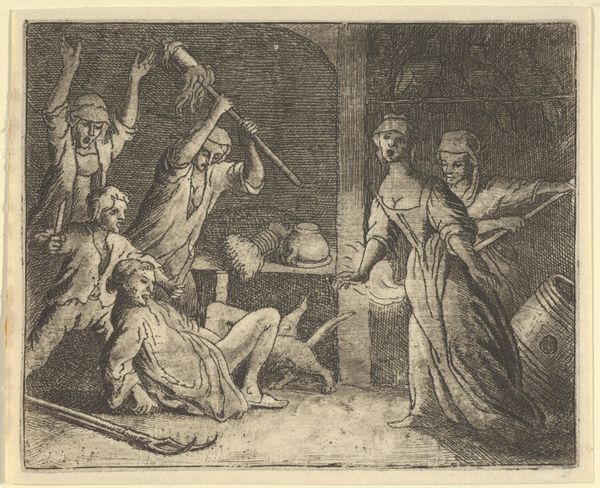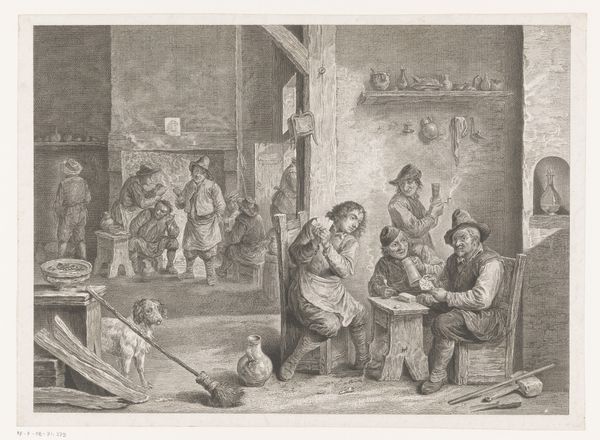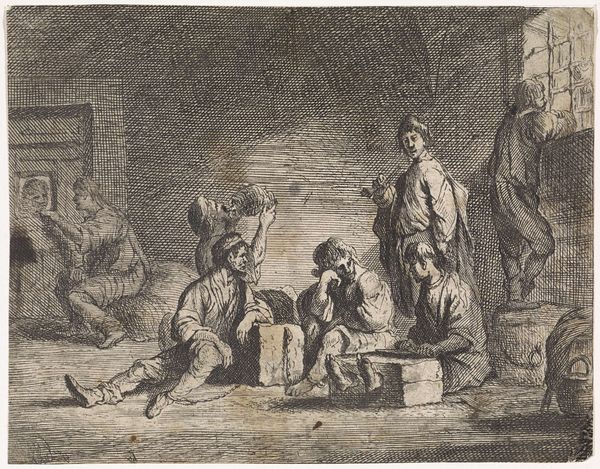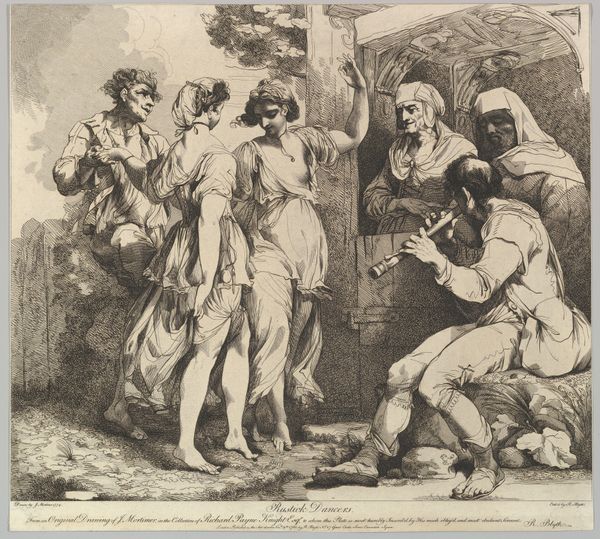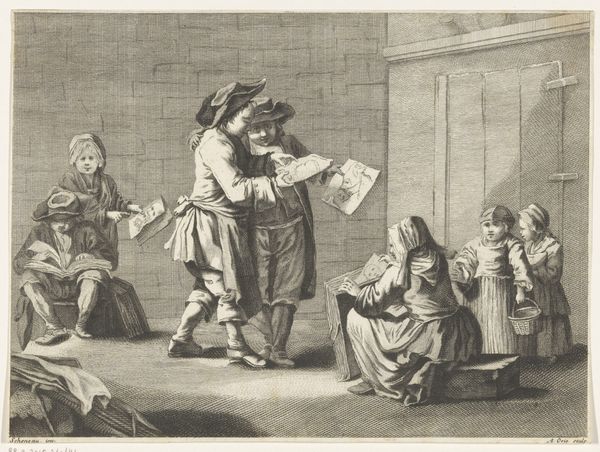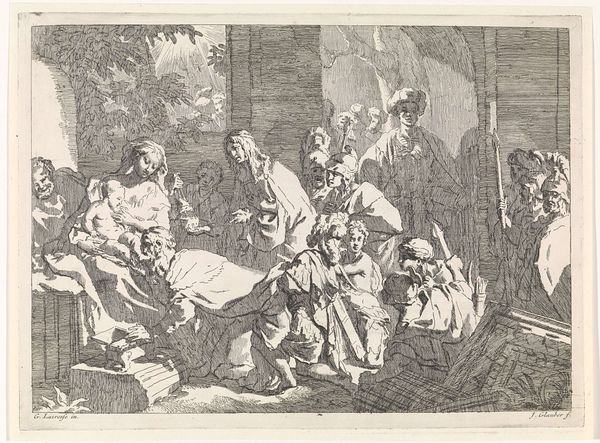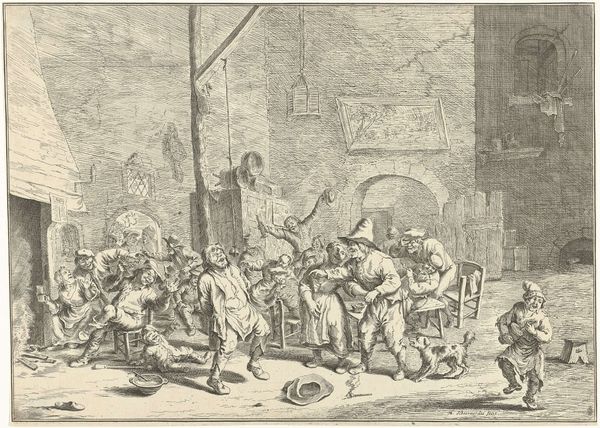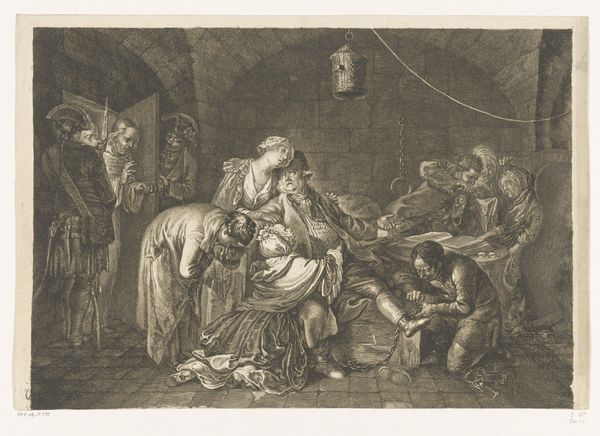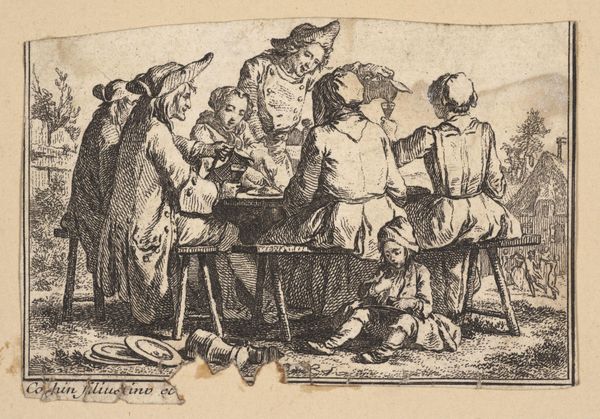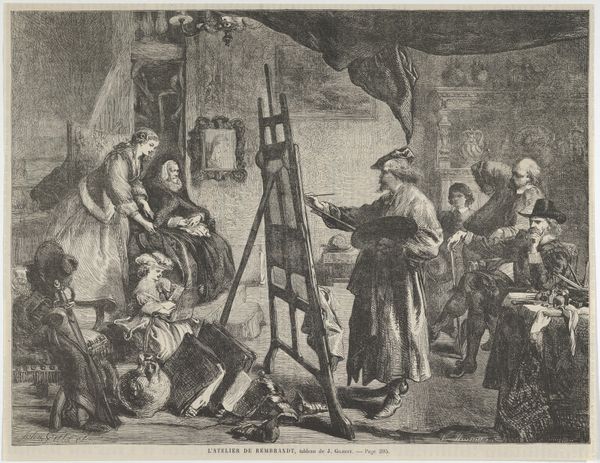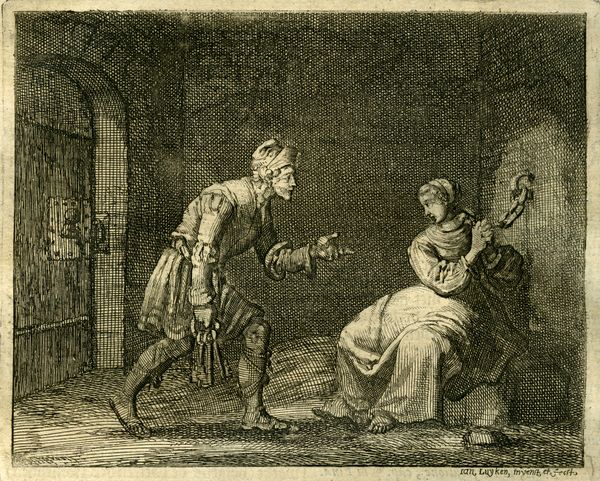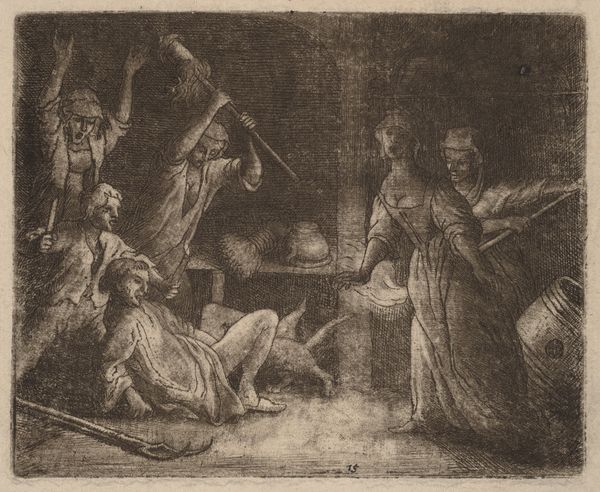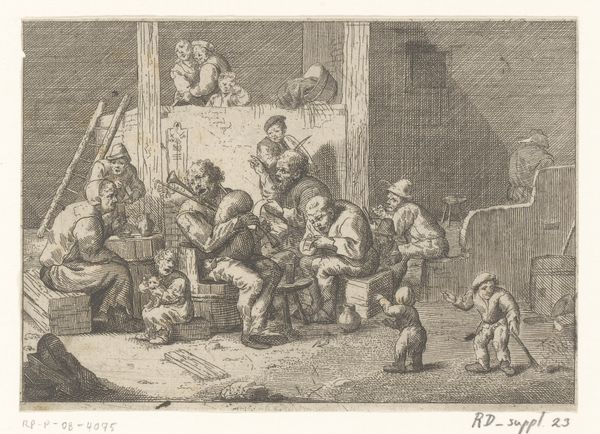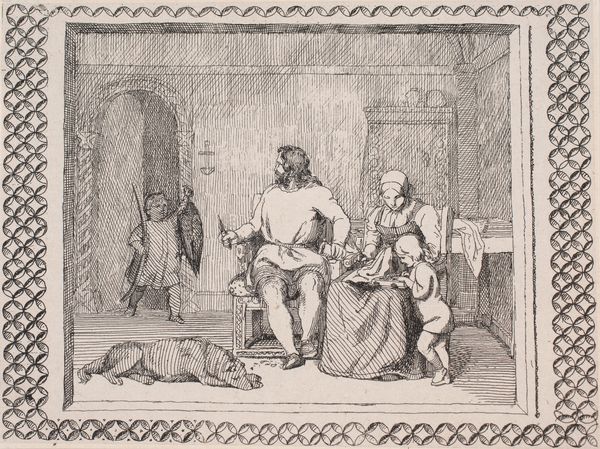
Dimensions: 20.9 x 28.9 cm.
Copyright: Public Domain
Editor: So this is *Departure for the Sabbath*, an etching by Dominique Vivant Denon, dating roughly from 1750 to 1850. It feels so theatrical and eerie at the same time. There’s clearly a narrative unfolding, but I can’t quite put my finger on what's going on. What's your take? Curator: Well, look at it through the lens of social history. This etching emerged during a period of intense fascination, and often, fear surrounding witchcraft and the occult. Consider how popular imagery like this shaped public perception, not just of supposed witches, but of women generally. Denon’s composition draws heavily on existing tropes. Editor: Tropes? Curator: Notice the gathering. Who do you see, and where do they exist within society? You’ve got what looks like a coven, overseen by a devilish figure, juxtaposed with younger women perhaps being initiated or seduced into this dark world. It’s sensationalist. Ask yourself, what purpose does portraying these women as figures of erotic, dangerous power serve? Who benefits? Editor: It definitely highlights the patriarchal anxieties of the time, doesn't it? The narrative is less about literal witchcraft and more about anxieties surrounding female independence and sexuality. I never really considered the institutional aspect before—how art like this reinforces societal power structures. Curator: Precisely. And remember, the accessibility of prints meant this image circulated widely. Think about its impact on shaping and confirming beliefs in witchcraft within popular culture. What was considered shocking and dangerous here may point at real female rebellion and societal transgression. Editor: It's fascinating to consider the political dimensions of an image like this, how it functions within a broader societal discourse. Thanks, this was really helpful. Curator: My pleasure! Analyzing art as a reflection of socio-political power is key to understanding its enduring relevance.
Comments
No comments
Be the first to comment and join the conversation on the ultimate creative platform.
